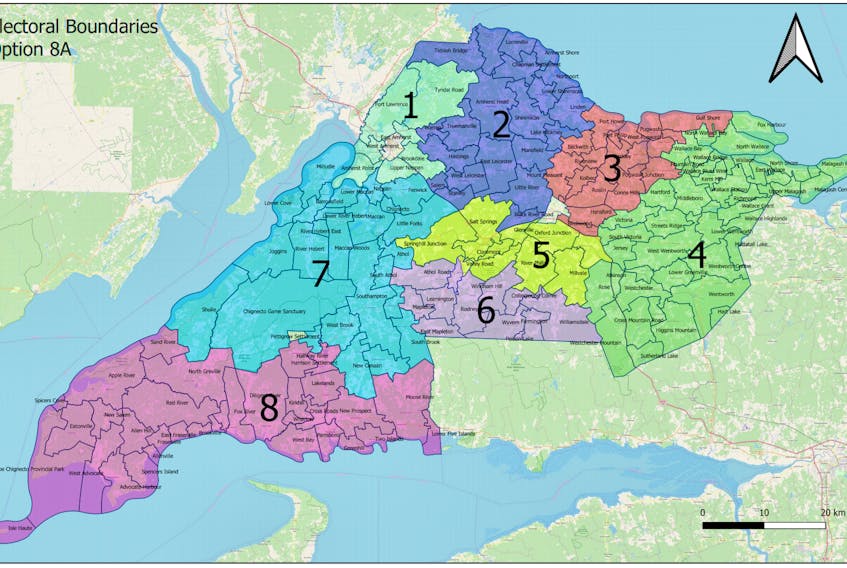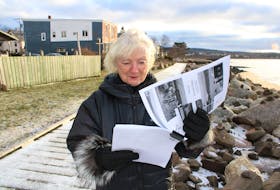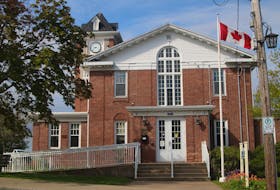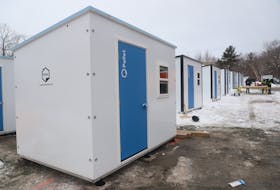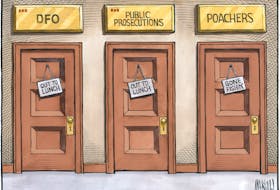UPPER NAPPAN, N.S. — Cumberland County will have new voting districts when electors go to the polls in next October’s municipal elections.
Municipal council concluded the process that will see its size reduced from 13 to eight by voting on its new electoral map. Only three councillors opposed the decision, including Deputy Warden Ernest Gilbert and councillors Daniel Rector and Don Fletcher while councillors Norm Rafuse and Marlon Chase were not in attendance.
“We will make an application to the Nova Scotia Utility and Review Board over the next several weeks, probably by the middle of December. The board will have the final say and it will have a hearing, probably sometime in February,” planner Nelson Bezanson said. “We don’t forsee any problems since council’s decision was right down the middle of what they were recommending and we followed the process right to the letter.”
If there are no issues, he expects the utility and review board will make its decision soon after with the changes going into effect in time for the October 2020 elections.
Bezanson said he and assistant planner Will Balser have worked on the file for several months and worked to come up with electoral districts that fall within the plus or minus 10 per cent ration of average voter population in each district.
The districts that were proposed also worked to represent communities of interest as much as possible and also took into consideration population changes – especially in the area west of Southampton and along the Fundy shore between Advocate Harbour and Parrsboro.
Fletcher, who presently represents District 10 around the Advocate Harbour-Apple River-New Salem areas, said the change means he won’t offer in the next election.
“There’s no way anyone can do it,” he said. “It’s 80 kilometres between Advocate and Parrsboro. It would be impossible to fully and successful represent such a large area. What we have now is the largest district in the county and second largest in the province and what this does is make it larger.”
Fletcher, who supported a council of 10 when the original decision on council size and leadership was made several weeks ago, said some districts are smaller in geographic size because of population, but at the same time those districts don’t have as many community responsibilities such as fire departments and development associations.
“I’m not going to run for council because you’re being set up for failure. It’s too large,” he said. “If you’re going to be engaged and look after all the groups it just got bigger. Right now I have two development associations, several fire departments and now I’d have to take in all of Parrsboro.”
Coun. Maryanne Jackson is supportive of the new boundaries. For one, she said, it represents the present split in Springhill between her district and that of Coun. Doug Williams. Areas like Springhill Junction will fall into her district while others, like Rodney and Leamington, will fall into Williams’ district.
“For us, in Springhill, it works very well. We will still have our two councillors, although will have a bigger area to cover, and the people in Springhill won’t be confused about which district they’re in,” she said. “I think it’s a really positive change for us. We’ll have more people to represent in the county, but we already had a large number because Springhill is heavily populated compared to other areas. It certainly not unmanageable.”
During the last election, following the dissolution of both the towns of Springhill and Parrsboro, the municipality was allowed by the Nova Scotia Utility and Review Board to have 13 districts with Springhill maintaining two representatives and Parrsboro one.
Springhill will be divided in half, as it is now, with one side including areas such as Springhill Junction, Little Forks and Fenwick and the other including part of the former town as well as Rodney, Leamington, Athol, Collingwood and Williamsdale.
A large part of the district presently held by Deputy Warden Ernest Gilbert would be joined into District 9 that’s held by Mike McLellan and include Southampton, River Hebert, Joggins and Nappan.
The area around Amherst would maintain a district while areas such as Fenwick, Salem and Hastings – that are now part of District 2 – would be merged with the former District 8 and 9 as well as District 3.
The area that’s presently District 3 would remain along the Northumberland Strait, while the Pugwash area would remain a district and the Wallace and Malagash areas, represented by Coun. Lynne Welton, would be grouped in with Wentworth and Westchester, represented by Coun. Barb Palmer.
Council voted earlier to move to a system in which the voters will elect a mayor instead of maintaining the warden system in which the county’s leader is elected from council by his or her peers.

